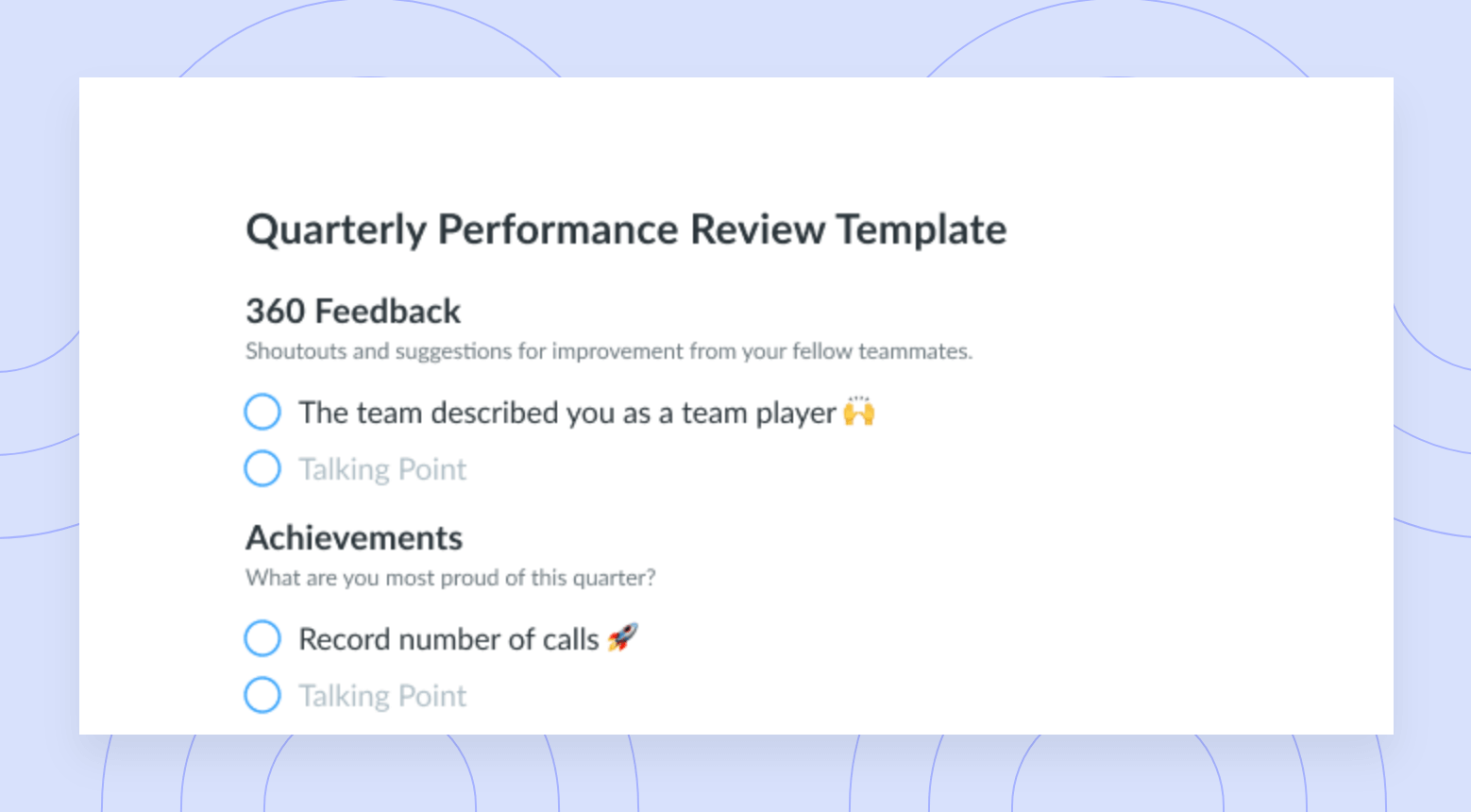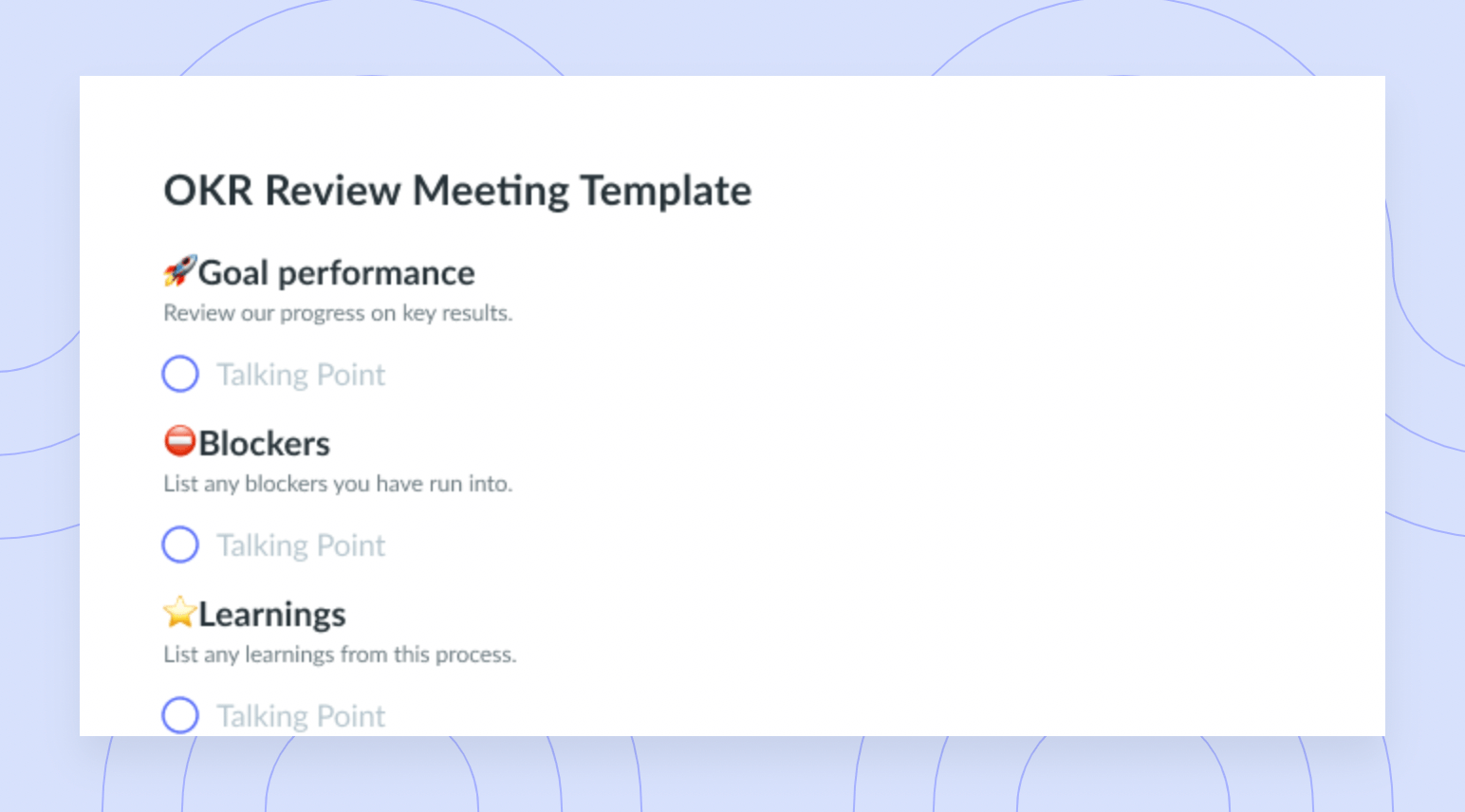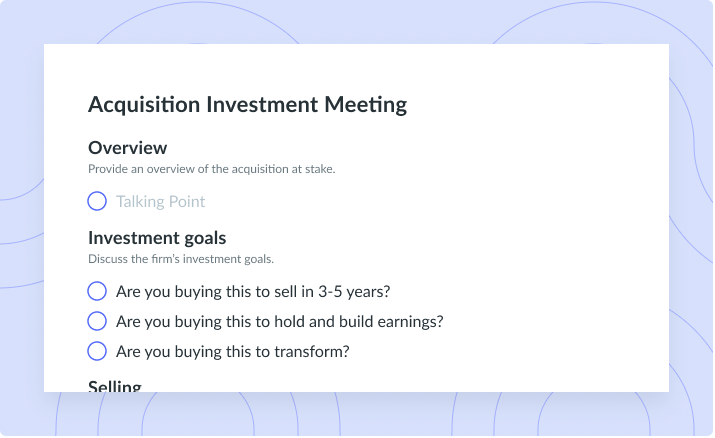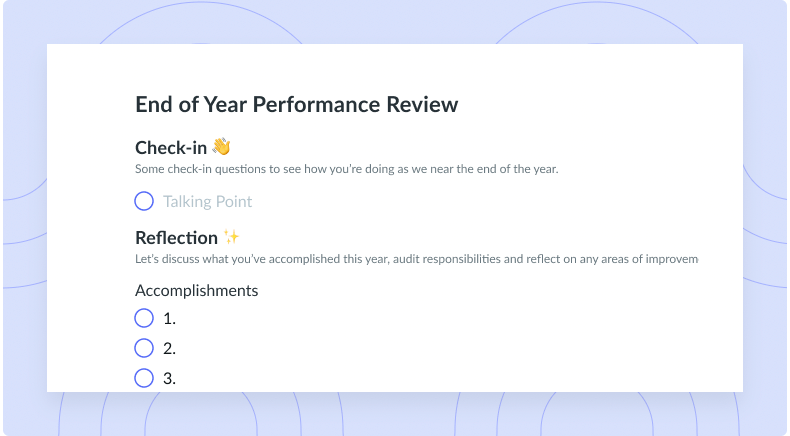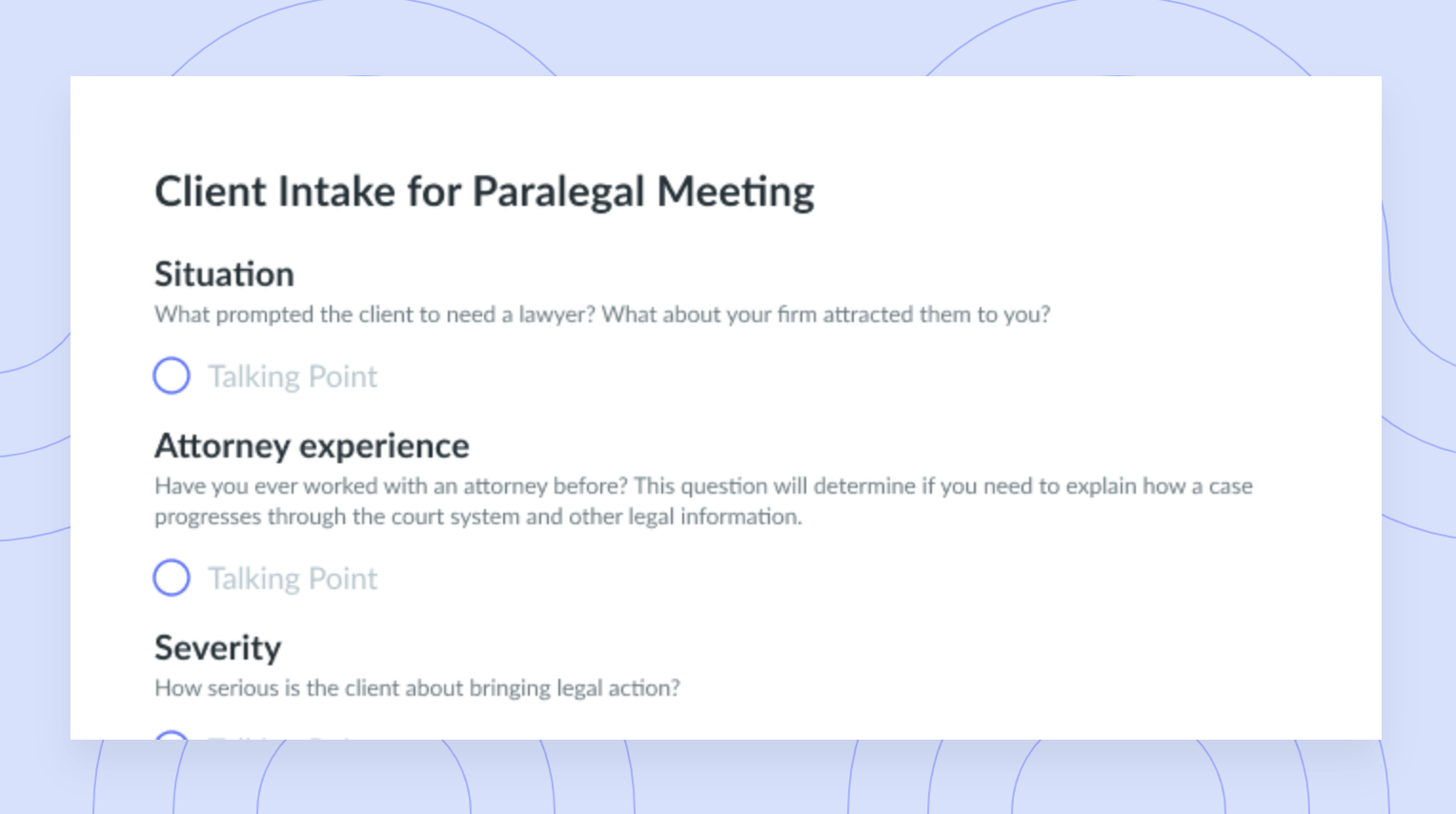Performance Review Calibrations: A Complete How-to Guide [+Free Template]
Performance review calibrations help ensure employees are performing to a certain standard across a team or across the entire company.
Performance review calibrations are processes through which the leaders of an organization collaborate to compare their direct reports’ performances to promote consistency across a team, across several teams, or throughout the whole organization. Performance review calibrations act as a useful tool because they enforce fair protocols, procedures, and practices with all employees. These calibrations also help leaders support one another and collaborate on where the bar should be set for team members throughout levels of the company. Not only can managers then work together on what their expectations are for employees, but they can also determine the best way to conduct performance reviews—this helps ensure consistent and fair performance reviews and ratings for all.
This article will cover what a performance review calibration is, walk you through the performance review calibration process, outline some pros and cons of performance review calibrations and some performance review calibration best practices, explain how to use Fellow to run performance review calibrations, and finally, provide you with a performance review calibration template that you can try for yourself.
- What is a performance review calibration?
- Performance review calibration process
- Pros and cons of performance review calibrations
- 4 performance review calibration best practices
- How to run productive performance review calibrations in Fellow
- Free performance review meeting template
What is a performance review calibration?
A performance review calibration is a process through which managers of an organization discuss their proposed or hypothetical employee ratings with other leaders. The goal of these performance review calibrations is to agree on a consistent way of conducting performance reviews across the company. The intent is to ensure fair practices are being implemented across the board and eliminate as much bias as possible. It’s also a great opportunity to collaborate and give suggestions and feedback in a constructive discussion.

Give and get feedback as work happens
A healthy and strong culture starts with feedback. Fellow enables your team to share real-time feedback on meetings, projects, and performance.

Performance review calibration process
- Create a performance plan
- Attend training and collect self-evaluations
- Have a performance calibration meeting
- Have one-on-one meetings
1Create a performance plan
Start by creating a performance plan for the coming year for each employee, after conducting their latest performance review. The objectives, rating system, and criteria for high performance ratings should be determined by the leadership team and human resources (HR), which can then be communicated to managers who will ultimately create performance plans with each of their direct reports. As a manager, when you create a plan with your employees with specific goals and clear expectations regarding their performance for the year ahead, your employees have tangible objectives they can work towards. This plan also eliminates confusion and drives fair practices across the organization.
2Attend training and collect self-evaluations
Anyone who is a people manager should engage in training so they can review what their role is in the performance review process and what kinds of performance review standards are currently in place. Managers should also ask that each employee complete a self-review appraisal to understand if there are any gaps between the manager’s evaluation and the employees’ evaluation of their work. After reviewing employees’ self-appraisals, leaders can then assign a performance appraisal rating to all their employees.
3Have a performance calibration meeting
After all people managers have given a performance rating to each employee, the performance calibration meeting can take place. At this time, employee performance reviews have been submitted to HR and to senior leadership for review. Typically, an HR representative is a strong facilitator for the performance calibration meeting, since they have expert knowledge about people and the organization and tend to have an objective view. Alternatively, managers can give a subjective review because they work quite closely with their employees. The group of managers and the leadership team review and compare the performance ratings to ensure that all team members were evaluated using the same standards and practices. Discussions take place to adjust any individual ratings to ensure consistency.
4Have one-on-one meetings to deliver performance reviews to employees
After the necessary discussions are had, modifications are made (if required), and managers write their final performance reviews, it’s time for managers to conduct one-on-one meetings with each employee. During these one-on-ones, an honest and genuine conversation about why the particular ratings were given, what’s going well, and which areas of responsibility need some attention and fine-tuning should take place. All managers should be confident that they applied ratings in a fair, consistent manner that can be explained in detail to employees. Lastly, managers can discuss what employees should focus on for the year ahead.
With Fellow, you can collaborate on meeting agendas, assign action items, get suggested conversation topics, and exchange feedback for productive 1:1 meetings every time.
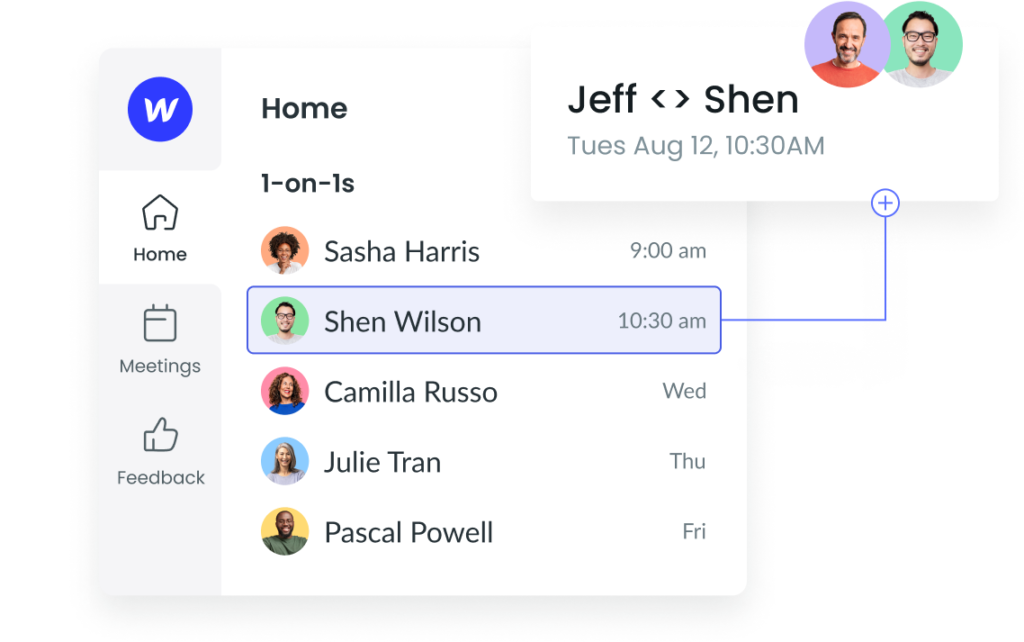
Pros and cons of performance review calibrations
Pros
- Increase consistency of reviews: What criteria entails a high performer or a low performer, and what expectations are will differ from manager to manager. Taking the time to openly discuss an unbiased rating approach creates more consistency.
- Reduce bias: More consistency and accuracy in the way you rate your employees will identify and help reduce any bias that surfaces in the meetings.
- Promote transparency: Using a fair and measured rating or review approach allows managers to be honest with their employees on what needs to be done for them to take their careers to the next step.
- Reward high performers: Performance review calibrations help identify and reward high performers, giving them well-earned recognition and rewards.
Cons
- Are a time-consuming process: The performance review calibration process has several steps, and even during the calibration meeting, the management team may find it challenging to always come to an agreement.
- Are expensive: It can be costly to implement processes, training, and workshops and to provide the necessary tools and resources to employees and the leadership team.
- May not make significant differences: Regardless of the time, effort, and detail put into a performance review, some employees will not be as engaged as others and will remain tougher to manage.
- May not be liked by all managers: Some managers will be more engaged than others, since performance review calibrations are somewhat of a rigorous process.
4 performance review calibration best practices
- Remove performance curves
- Include everyone in the process
- Facilitate trust
- Conduct initial calibrations at a local level
1Remove performance curves
Make sure that you remove any performance curves for employees so they can actually reach their potential. Performance curves can act as a crutch for organizations but can ultimately be dangerous and should not be used to guide employees. Assessing employees’ performance by a graphic diagram should not determine the way in which they should be guided towards their goals and the company’s goals.
2Include everyone in the process
Ensure that anyone who needs to be included in the performance review is included in the process. Anyone who interacts with an employee could be helpful in taking a look at their performance review, so long they are not one of the employee’s peers. More eyes on a performance review from those who work closely or oversee the work of employees can be valuable in ensuring the performance rating is fair and accurate. Make sure that you include everyone in the process to ensure agreement and consistency in employee ratings and to also reduce your own selection bias.
3Facilitate trust
It’s essential to trust your managers and their evaluations of employees. The performance review calibration allows you the opportunity to trust managers but also review their ratings of their employees to ensure the process is fair. You want to ensure that if a particular employee has a high rating and is also promoted that they are meeting their targets in the next quarter, for example. If not, there should be a closer investigation as to why the employee’s manager thought they would be eligible for that transition.
4Conduct initial calibrations at a local level
Conducting initial calibrations at a local level (on a smaller scale) is often helpful. If you’re trying to conduct a performance with a large group of employees who need to be reviewed and calibrated, it will be difficult to conduct a deep dive on each of those individuals and give enough context on each employee. If you conduct initial calibrations per team with each leader of those managers, you’ll get a clearer idea of whether the ratings are fair and consistent.
How to run productive performance review calibrations in Fellow
Using Fellow’s management software, you can run really productive performance review calibrations that will allow you to provide feedback to your employees and your employees to do the same for you. However, ensure that you’re also providing opportunities outside of performance reviews for reciprocal feedback to be given and received in one-on-ones. Travis Feddema, Financial Advisor and Wealth Management Analyst at PWL Capital, shares how Fellow’s feedback feature benefits him and his team:
“The feedback feature is really cool. We like to use it for meetings to check the pulse and see how everyone feels about the structure. With feedback in Fellow, you can also give anyone feedback at any time, whether it’s your colleague, direct report or manager. Feedback has become really organic and part of our routines.”
Free performance review meeting template
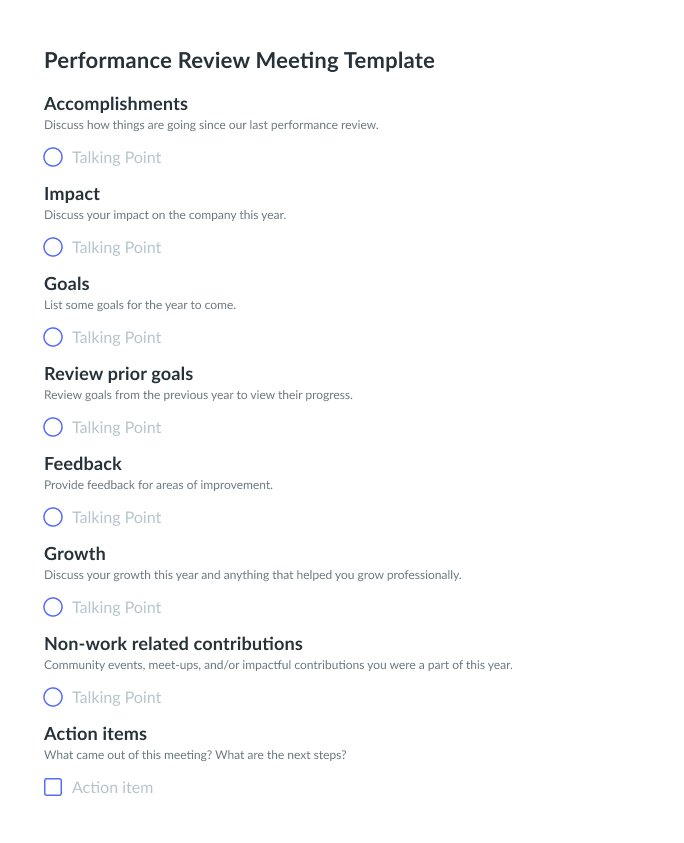
Parting advice
Performance review calibrations are a fantastic way to ensure fair practices, processes, and ratings are being given to employees throughout an organization. These calibrations also give new managers and team leaders an understanding of how to evaluate their employees’ performance reviews and what the bar may be at for each level within the organization. Additionally, performance review calibrations are a good opportunity for leadership to collaborate on how to approach delivering the most unbiased and fair reviews to their employees. This will help employees clearly understand where they’re at, keep them motivated, and help them feel supported. Overall, calibrations also help drive consistency in company values, which drives employee satisfaction.









